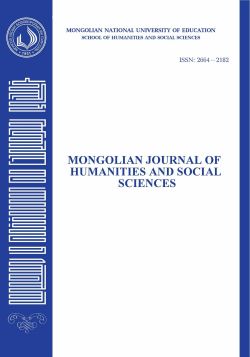Concerns related to new information tool-synthetic media and Deep Fake content
DOI:
https://doi.org/10.69542/mjhss.v9i18.3697Keywords:
Artificial intelligence, Algorithm, Media manipulation, GANs, New media, Social network, Media literacyAbstract
Media content, form, and technology innovation are all being significantly impacted by artificial intelligence. These days, artificial intelligence is incorporated into every news media program to some extent. In particular, improvements in character-based artificial intelligence began to assist journalists in their daily work.
On the other hand, artificial intelligence has given rise to a whole new kind of misleading information that is virtually identical to actual information in both form and structure. Synthetic media and Deep Fake information are terms used to describe false information and news produced with artificial intelligence. Artificial intelligence that creates deep fake content uses the three main methods of machine learning—supervised, unsupervised, and reinforcement learning—as well as the technology referred to as Generative Adversarial Networks (GANs), which produce fake images that resemble face swaps or real-world video simulations and can identify and learn from deep fake information. They have also advanced to a point where they can create convincingly fake videos on their own without assistance from humans, which will have a big impact on the entertainment, media, and film sectors.
Therefore, three things need to be done to stop this kind of information from spreading: firstly, create an algorithm with countermeasures; secondly, teach journalists and editors to double-check the information to make sure it makes sense; and thirdly, public media education must be enhanced.
If we do nothing about deep fake content right now, people will stop believing in news sources completely, and the infocalypse is quickly approaching. To be more precise, several studies have revealed that the people in our country lack media literacy. Consequently, if this kind of information reaches us, it will be quite challenging to control and halt it.
Мэдээллийн шинэ хэрэгсэл дэх синтетик медиа буюу гүн худал (synthetic media-Deep Fake) контентийн асуудалд
Хураангуй. Хиймэл оюун ухааны ололт амжилтууд хэвлэл мэдээллийн хэрэгслүүдэд цөөнгүй дэвшилийг авчирчээ. Гэвч үүнийг дагаад шинэ технологийг ашигласан синтетик медиа, гүн худал контентийн асуудал бий болж, үүнтэй тэмцэх, сэргийлэх явдал дэлхий дахины хэвлэл мэдээлэл, олон нийтийн харилцааны салбарын мэргэжилтнүүдийн хувьд нэн чухал асуудал болов. Гүн худал мэдээлэл нь L(μG,μD)≔EX~y~μD(x)[In y]+EX~y~μD(x)[In(1-y)]. математик тэгшитгэлийн дагуу бэлтгэгдэж байна. Мөн алгоритм нь хиймэл оюун ухааны машин сургалтын аргын зэрэгцээ бодит хүний видео симуляци эсвэл нүүр царайг солих байдлаар хуурамч дүрсийг боловсруулдаг, зураг бичлэгийг зохиомлоор бүтээдэг, гүн хуурамч контентын алдааг олж, түүн дээрээ суралцдаг Generative Adversarial Networks технологид суурилан хөгжих болсноор хэн нэгний оролцоогүйгээр бие даан худал видео дүрслэлийг бэлтгэх ур чадвартай болжээ. Иймээс гүн хуурамч контенттой эртхэн тэмцэж эхлэхгүй бол иргэдийн мэдээ мэдээлэлд итгэх итгэл нэг мөсөн буурах цаашлаад мэдээллийн сүйрэл (infocalypse)-ыг бий болгоход ч ойрхон байна.
Downloads
272
Downloads
Published
How to Cite
Issue
Section
License
Copyright (c) 2024 Chinzorig Bayar

This work is licensed under a Creative Commons Attribution 4.0 International License.
Copyright on any research article in the Mongolian Journal of Social Sciences and Humanities is retained by the author(s).
The authors grant the Mongolian Journal of Social Sciences and Humanities a license to publish the article and identify itself as the original publisher.

Articles in the Mongolian Journal of Social Sciences and Humanities are Open Access articles published under a Creative Commons Attribution 4.0 International License CC BY.
This license permits use, distribution and reproduction in any medium, provided the original work is properly cited.




